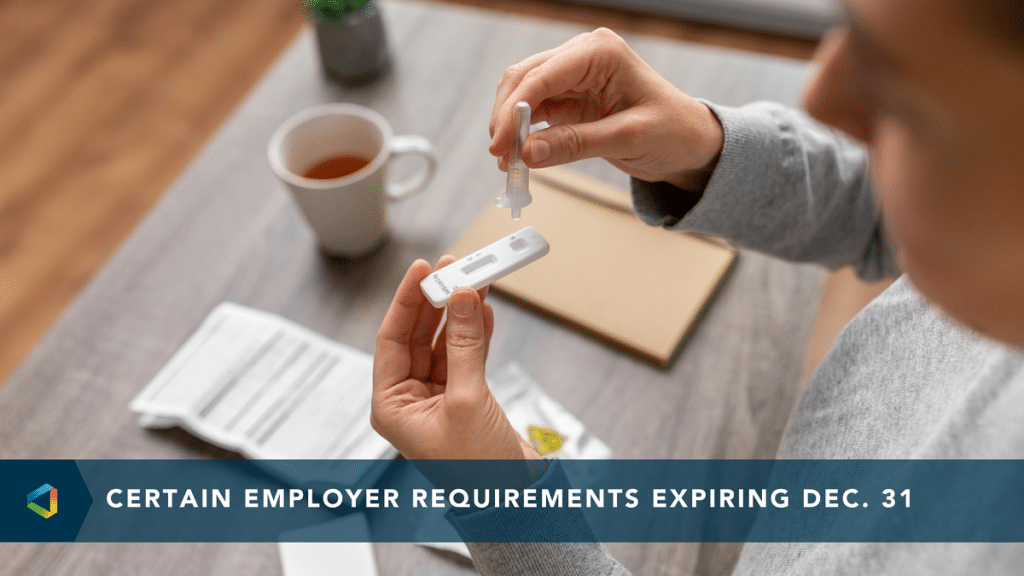Better Benefits, No Headaches
How Employers Can Handle the Delta Variant Disruption
How Employers Can Handle the Delta Variant Disruption
Recently, employers and employees around the world were beginning to get excited to return to mask-free, in-person workplaces. Many employers had set a post-Labor Day date for their teams to transition back to the office.
However, the rise of the COVID-19 Delta variant has disrupted these plans and many companies are being forced to re-implement mask policies and, once again, delay office reopening.
Below are 7 key considerations to help employers navigate the ongoing pandemic and determine what’s next for their workforces.
Remain Adaptable
COVID-19 has shown us that the future can often feel and be unpredictable. Leaders should remain flexible in their reopening decisions, timelines, ability to work remotely and contingency plans. These scenarios are still fluid, so it’s important to be transparent with employees about the information we do and don’t know and that these decisions are changeable based on circumstances.
Provide Transparent Communication
During such uncertain times, employees are craving information on how their business will respond to a potential uptick in COVID-19 cases. Clearly articulating your current plan and a contingency plan will help reassure employees and reduce anxiety. This way, employees will better understand what may trigger a change in office-based work or certain safety policies. In addition, some organizations have committed to ensuring employees have at least 4-weeks advance notice of any remote-work changes.
Survey your Workforce
As employee concerns mount, allowing them to feel heard, understood, and validated is paramount. Organizations can solicit information via a return-to-work survey asking employees their current comfort of returning to work, any concerns and offer a space for them to ask questions. Leaders can then address concerns and questions, creating two-way dialogue and communication.
Delay Reopening
Some organizations planning to return full force to the office after Labor Day are now rethinking this strategy and remote work as a whole. Some offices are pushing the reopen target dates to January and even the Spring of 2022. If remote work has been working for your organization and your employees have the ability to continue remote, consider remaining as so. Keeping employees out of the office may help limit the risk of spreading the virus, allow more flexibility, and help employees feel more prepared for unpredictable childcare situations.
Communicate a Mask Strategy
With the Delta variant uptick and the CDC’s recent guidance for all individuals to wear masks in public places, organizations are re-implementing mask requirements at the office, regardless of someone’s vaccination status. Employers may want to consider if they are in a COVID “hot spot,” create and communicate a policy consistently across the organization. Additionally, many states and local cities are implementing indoor mask mandates. Stay abreast of the mandates that may affect your employee population.
Understand Your Workforce’s Vaccination Status
Employers are faced with the responsibility to keep employees safe and feeling secure. They may want to consider creating a confidential system to confirm the vaccination status of each employee and require masks to be worn at all times for those who are not vaccinated. Some companies have gone as far as having employees wear lanyards or bracelets signifying their vaccination status. Such a system can allow reassurance for employees that safety parameters are being implemented consistently across the organization. While this strategy can provide greater reassurance and clarity about each individual’s status, it can create greater risk of confidentiality concerns, as well as potential cultural or morale issues since some may not feel comfortable broadcasting their vaccination status. Additionally, employers should remain abreast of any specific state and/or local legal requirements regarding disclosing vaccine status and confidential medical information.
Consider Mandating Vaccines
Mandatory vaccinations are becoming more common. If you are considering mandating the vaccine for your employees, the first recommended step would be to assess your workforce’s current vaccination status to determine what percentage is fully vaccinated. If a large part of your population is vaccinated, you may not need to implement a mandatory vaccination policy and instead focus on encouraging any unvaccinated individuals to receive the vaccine. If most of your team is not vaccinated, implementing a mandate may help push those numbers up.
With the approval of the vaccines for non-emergency use, it may be easier to encourage vaccination for hesitant populations. It is also important to remember that with a mandate, any additional vaccine doses (such as a booster shot) would also need to be enforced. For more information on requiring the vaccine, visit our blog here.
COVID-19 has taught us that things can change rapidly and that organizations must continue to stay flexible in their approach and plans. Employers must continue to monitor the pandemic, evaluate the local threat of the coronavirus and emerging variants, and assess their options for minimizing coronavirus exposure in the workplace.




